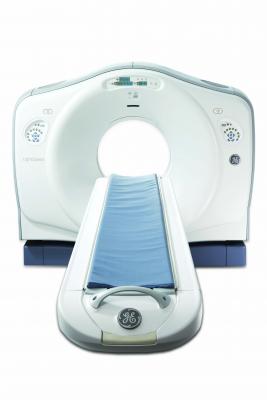
June 11, 2012 — An estimated 85.3 million computed tomography (CT) procedures were performed in 8,465 hospital and non-hospital sites in 2011 in the United States, representing an annual growth rate of 4 percent compared to 2010, when an estimated 81.9 million procedures were performed, according to a new survey of CT sites in the United States by IMV Medical Information Division.
“This 4 percent growth rate signifies a slowdown in the average annual growth rate compared to the early 2000s, when CT growth was in the double digits,” said Lorna Young, senior director of market research at IMV. “While CT procedure growth has slowed compared to a decade ago, 58 percent of the surveyed sites indicated that they anticipate their procedures will grow in 2012 compared to 2011, and an additional 34 percent anticipate that their procedures will stay at the same level this year.”
The research indicates that hospital CT departments are experiencing a number of pressures that challenge their operations, including reduced Medicare and third-party reimbursements, while CT procedure volume is increasing or remaining constant. Hospital-based radiology departments are seeing an increased number of emergency patients, with 80 percent of the hospital respondents indicating that a major priority for their departments is managing increases in the number of emergency patients. With these operational pressures, CT scanners are still a workhorse modality for radiology departments, and the need for improving CT department workflow and productivity is therefore even more pronounced, according to Young.
In the current healthcare environment, reimbursement rates for CT scans performed at hospitals are more attractive than those conducted at independent imaging centers not owned by hospitals, and hospitals are responding to the resulting increase in procedures by shifting their outpatients to hospital-owned imaging centers. This also helps them accommodate increased emergency patient volume within the hospital, Young said.
"We are seeing increased buying activity by hospitals for imaging centers they will own/manage, and faster increases in CT procedure volume in these imaging centers, compared to freestanding imaging centers," Young said.
Over the past decade, inpatient CT volume as a percentage of total CT volume has shifted from 34 percent in 2001 to 18 percent in 2011, with outpatient and emergency department volume increasing from 66 to 82 percent.
Survey respondents were asked their perspectives on department priorities over the next year. While improving the capability to reduce radiation dose to patients was rated as "5-very important" for 75 percent of the respondents’ department priorities (using a five-point rating scale), respondents did not feel this is having much impact on the growth of CT procedures; only 10 percent gave "5-totally agree" ratings that "patient and public concerns over radiation dose will slow the growth of CT procedures" at their facility.
IMV's "2012 CT Market Outlook Report" describes trends in procedure utilization, the CT-installed base and purchase plans, power injectors, contrast media utilization and budgets, and site operations characteristics. In this report, IMV also provides market scenarios for CT unit purchases from 2012 through 2015.
Highlights include:
- The CT-installed base is estimated to be 13,775 fixed CT scanners installed at 8,465 sites.
- Of those planning to purchase CT scanners from 2012 through 2015, over two-thirds are planning to purchase units with 64 or more slices.
- Based on respondent estimates, the average replacement cycle for a CT unit is 8.9 years.
- Over half (53 percent) of the 85.3 million CT procedures performed in 2011 used contrast media, and 47 percent did not. Between 2007 and 2011, the proportion of procedures using contrast media declined from 67 to 53 percent.
The report is based on responses from 405 radiology administrators nationwide. Their responses have been projected to the universe of 8,465 short-term general hospitals and imaging centers in the United States that have fixed CT scanners, as identified by IMV.
For more information: www.imvinfo.com


 July 22, 2025
July 22, 2025 








